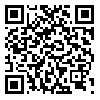Introduction: Traffic accidents (T.A) are introduced as the second cause of mortality after cardiovascular diseases in Iran as well as third causes after cardiovascular disease and cancer in the developing countries. Iran about 25000 persons per year and 70 persons per day have been due to T.A. Regarding the increasing growth of population and number of transport vehicles as well as the high prevalence of T.A in all over the country specifically in Yazd, this study intended to evaluate the mortality trend caused by T.A in five years period.
Methods: This retrospective study was based on the information of the accident registration system using the statistics form of Yazd emergency medical services, accident management center, forensic center and Rahvar police. The sample size was determined via Census method all of the mortality cases of T.A(n=2492). The study data were gathered from the information of the registration forms of the dead and injured, and then was analyzed by SPSS software (ver,16). In fact, mortality trend caused by T.A was reported via Regression Poisson model.
Results: Regarding T.A mortality cases by T.A, the mortality rate has been decreased from 47.3% in 2007 to 33.7% in 2012.The majority of death cases were resulted from head trauma that have been decreased from 79.9% in 2007 to 62.3% in 2012.
Conclusion: The study findings revealed that since traffic Accidents' trend is decreasing, implementing traffic laws and regulation from one side and building a goog culture from another side are probably regarded as the main cause of decreasing accidents' trend during 2007-2012.
Received: 2014/01/29 | Accepted: 2014/03/11 | Published: 2016/03/8
| Rights and permissions | |
 |
This work is licensed under a Creative Commons Attribution-NonCommercial 4.0 International License. |


